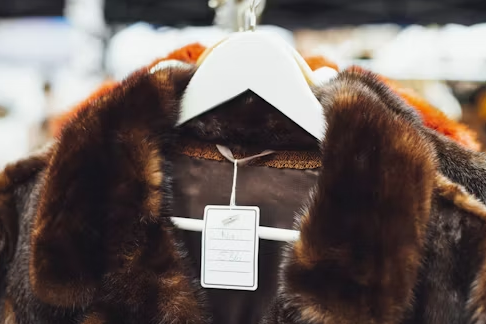It’s always fun to experiment with clothing, whether that means participating in the hottest new trend or investing in timeless classics. Unfortunately, fashion companies often turn to animal-derived materials when manufacturing higher-end items. For example, cows are routinely skinned in slaughterhouses, their hides subsequently treated with toxic chemicals to create leather1. Sheep have been selectively bred to overproduce wool, so much so that if neglected, they would die of overheating2. Exotic animals, like crocodiles and snakes, are taken from the wild or exported in unsanitary conditions for their uniquely-patterned skins.
Going vegan is a holistic lifestyle change that incorporates one’s clothing in conjunction with all other consumption practices. Luckily, if you are still looking for the durability and aesthetics of animal materials, many companies now provide ethical alternatives.
1. Leather
Although people usually think of cows when considering the source of leather, the term also applies to the skin of pigs, lambs, and goats. Companies may also source leather from deer, snakes, crocodiles, horses, ostriches, kangaroos, and stingrays, with the resulting products often accompanied by a hefty price tag.3 Because leather is so popular, many alternatives exist, ranging from polyvinyl chloride and polyurethane to those that are higher-end and much more sustainably- and ethically-sourced. These natural faux leathers are often crafted by smaller brands from pineapple leaves, cactus, cork, and apple peel4.

2. Wool, Cashmere, and Other Animal-Derived Fiber
Although shearing animals may seem harmless, the animal fiber industry is part of the animal agriculture industry and also has animal cruelty issues. In addition to the generations of genetic modification that has favored animals with more hair than necessary, they often live in abysmal conditions, exposed to the elements without sufficient food and water.5 Under pressure, workers sacrifice animal well-being in the name of efficiency, often treating the animals roughly. They injure them both by accident and on purpose, like when removing the tail (“tail-docking”) so wool around that area doesn’t get contaminated with feces and to reduce fly strike.
There are many different varieties of plant-based and synthetic fabrics, ranging from viscose, rayon, linen, and more. But, if you are craving warmth, try synthetic fleece (“fleece” usually does not refer to wool), acrylic, or polyester. Cotton is a great alternative for animal fibers; it is lightweight yet warm, and is known for its moisture-wicking properties.

3. Fur
Though fur coats used to represent the pinnacle of fashion, the way in which furriers obtain this material is rather gruesome. Animals like rabbits, ermines, foxes, minks, and virtually every other haired mammal are first skinned before bits of fat are scraped away.6 Chemicals are then applied to smoothen the skin and hairs. Because fur may be the most controversial animal-based material, companies have been responding to the demand for alternatives for a while. Most are made from acrylic, rayon, and polyester. However, there have been anecdotal reports of companies selling real fur, even though the products were advertised as vegan—as such, it can’t hurt to double check or shop elsewhere if you have doubts.7

Ultimately, these suggestions provide alternatives to animal materials that are nearly identical in texture, appearance, and durability. However, it may be worth it to consider forgoing even vegan alternatives. Wearing something that looks to be animal-derived may send out the wrong message, since the untrained eye won’t be able to discern real from fake. But, no matter what you choose, it’s best whenever possible to shop vegan.
References
1. 8 Facts About Leather Guaranteed to Make You Hate It
5. Why Isn’t Wool Vegan? The Reality of Sheep Shearing
7. What is PETA’s Stance on Faux Fur?

